We’ve all heard it before, the verbal butchering of our city and county name, Lancaster. Emphases on the wrong syllables. Strangely hard consonants and irregular drawn-out vowels. Defense of our pronunciation is so ingrained in our communal psyche that we even have T-shirts and bumper stickers explaining how to say … Lank KISS stir. After some traveling, I realized a few neighboring states have their own Lancasters, all of which have their own pronunciations.
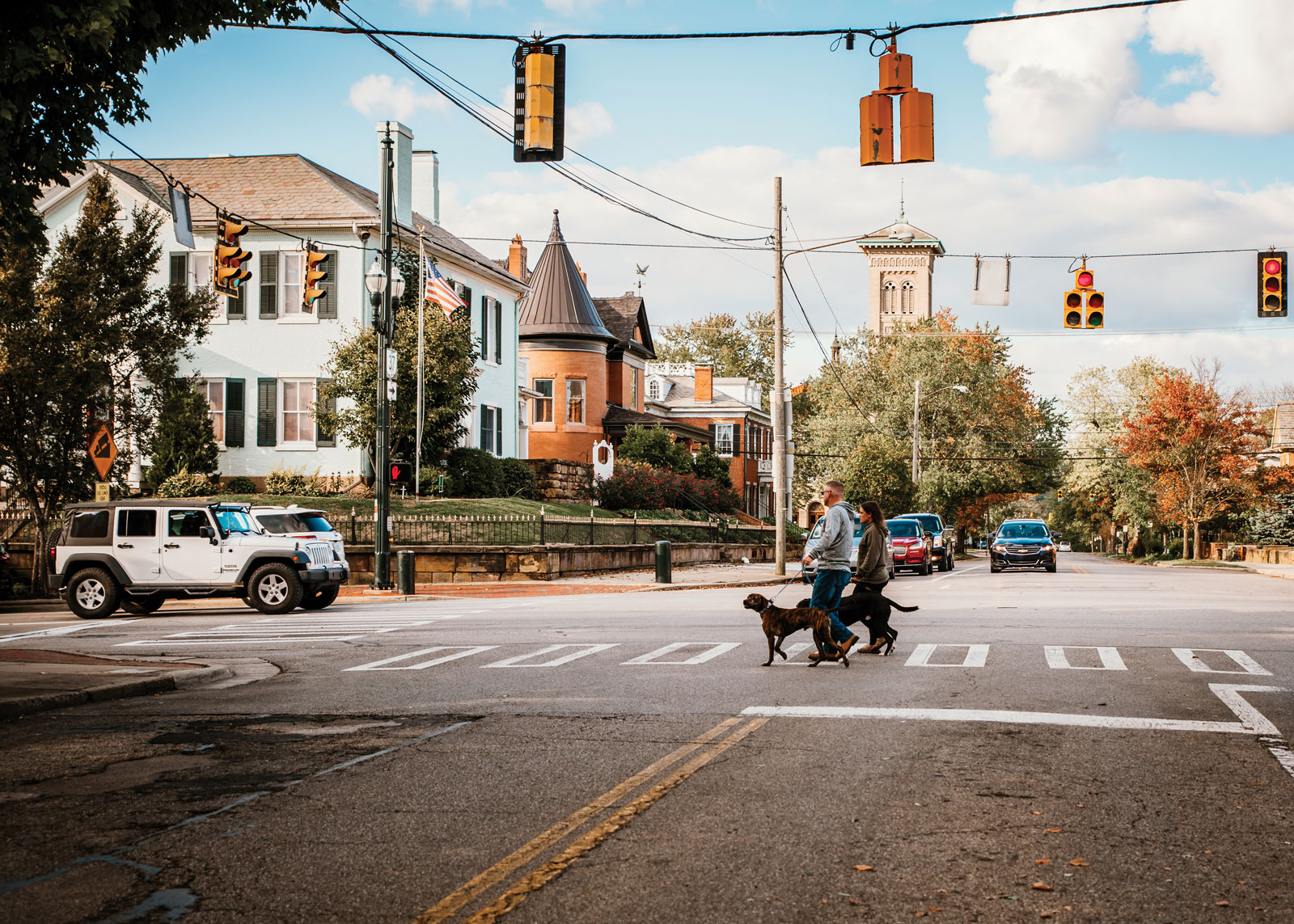
If you didn’t know any better, you might think you’re in Lancaster, Pennsylvania, and not Lancaster, Ohio. Actually, the Lancaster in Ohio was named after the Lancaster in Pennsylvania, as German immigrants from the area made their way to Ohio. Reine Down Photography.
The place name of Lancaster heralds back to Lancashire, England. Colonial pioneer, John Wright, named this area after his homeland. Nestled on the banks of the River Lune as it opens into Morecambe Bay, the Lancaster city 55 miles north of Manchester and Liverpool has few geographic similarities to our Lancaster (the Lancaster County Prison being an exception). I was curious if we shared anything in common with the surrounding Lancasters in New York, Ohio and Virginia.
LANK-ə-stər, OH-IO
My discovery of these nearby Lancasters started in Ohio, when I found myself traveling to a woodland getaway. I had flown into Columbus and headed toward the Hocking Hills when I passed through Lancaster. I came to learn this Lancaster is actually named after Lancaster, Pennsylvania – and is proudly pronounced nearly the same way!
First organized in 1800 as New Lancaster, the town predates the state of Ohio and was formed from land tracts earned by a pioneer named Ebenezer Zane. The first settlers to make New Lancaster home were German immigrants from Lancaster, Pennsylvania.
Today, historic preservation is key in Lancaster and visitors take notice right away, says Visit Fairfield County director, Jonett Haberfield, who runs Lancaster’s tourism agency. Much of the downtown’s restoration and preservation is a result of the Main Street America program, which Jonett credits for the area’s current prosperity. Downtown furthers its historic presentations with three noteworthy museums: the Decorative Arts Center of Ohio, which offers exhibits, educational programs and events; The Sherman House Museum, birthplace of Civil War General William Tecumseh Sherman; and the Ohio Glass Museum.
Glass is a big thing around here. A successful glass industry is fueled by the abundance of natural gas in the area; there are small oil and gas wells dotting the countryside, seemingly in almost every rural yard and field. Lancaster is home to one of the largest producers of glassware in the United States, Anchor Hocking Glassware. “We make glass here,” explains Jonett. “We have a lot of resources under the ground and that has helped make Lancaster a glass town. We have a lot of art, because glass can be an art.” Indeed, I tried my hand at glass blowing at the Jack Pine Studio in nearby Laurelville.
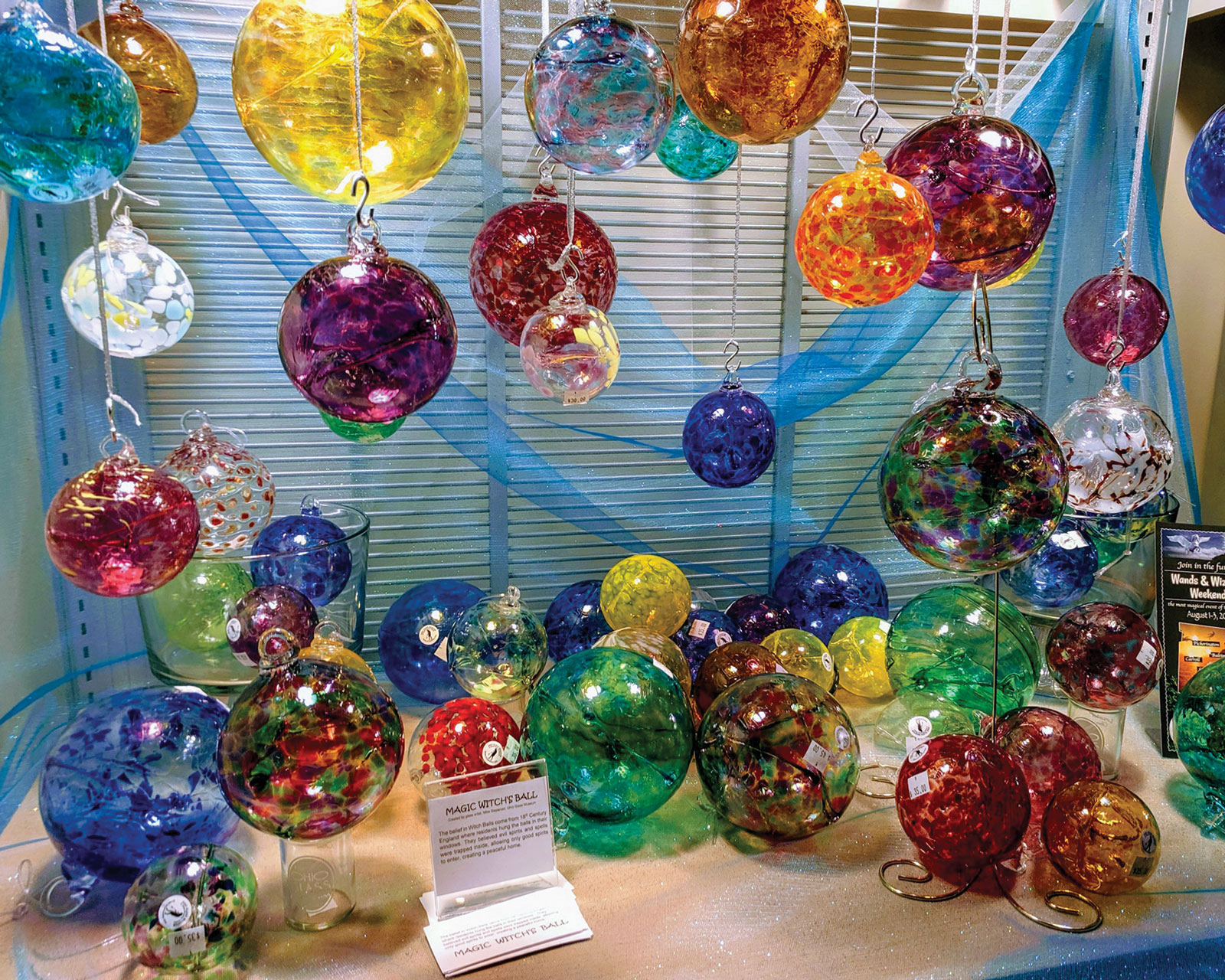
Lancaster, Ohio, is known for its glass art. Seen is an exhibit at the Ohio Glass Museum. Visit Fairfield County photo.
Historic preservation also made Lancaster’s Fairfield County home to the most original covered bridges in Ohio. Several bridges are in Downtown Lancaster. In addition to the familiar presence of covered bridges, I could not feel too far away from home as I continued to see signs for Amish markets and furniture for sale. Most of the Amish in Ohio, whose population is second only to ours, migrated from Somerset County starting in the 1800s. The Amish community is concentrated in one Ohio county north of Lancaster, but compared to Pennsylvania, it seems to me their influence and members have spread out greatly.
In the summer, Lancaster is abuzz with an open-air art trail, a collection of great restaurants and several festivals and events. The largest gathering, Lancaster Festival, is a 10-day music and arts celebration that tends to serve as a homecoming event for those who may have moved out of town. The multi-venue festival, which kicks off with an art walk at the end of July, is like our Roots & Blues Festival and LAUNCH but with art, too.
“We have an orchestra here in Lancaster and members come from all over the country,” says Jonett. “They bring in headliners and well-known jazz artists.”
Visiting Lancaster, Ohio, is easy with the use of the Visit Fairfield County Ohio app, which provides one-touch access to several fun challenges, current and upcoming events and local trails. Trails include the Covered Bridge Country Wine Trail, the Route 33 Brew Trail and others focused on coffee, sweets, art and antiques.
For more information: visitfairfieldcounty.org
LANG-cast-ər County, Virginia
In Virginia, the land forms three fingers where the Rappahannock, York and James rivers empty into the Chesapeake Bay. Colloquially called “necks,” the northernmost of the three formations goes by Virginia’s Northern Neck, which is two hours south of Washington, D.C., and almost as far east from Richmond. This is where Lancaster County, Virginia, is located.
Lancaster County is located in a sparsely populated neck of Eastern Virginia. Kilmarnock and Irvington are the two biggest towns, so I took a ride down to check out what they were all about. I made a quick stop in Kilmarnock and found a busy Main Street lined with all sorts of shops, antique dealers and eateries. Named after the city of the same name in Scotland, Kilmarnock was first settled in the mid-1600s, but it was not named until the late 1700s when a Scottish businessman decided to brand it a home away from home. The healthy Main Street is the result of a 2006 revitalization plan.
A short four-mile drive along a road lined with tall pine trees and modest mid-century homes with huge front yards brought me to my next destination. I spent most of my extended weekend in Irvington, having nestled into my lodgings at The Tides Inn, a waterfront resort exuding old-school charm while embracing modern amenities. Beyond luxurious linens, creative cocktails and onsite experiences, what impressed me most about The Tides Inn is their waterfront restoration project. Ownership has invested $3.6 million in restoring the shoreline of Carter’s Creek to help sustain oyster populations. The resort offers hands-on, educational trips on the water with an in-house ecologist. Other ecological programs espouse the benefits of the Maryland blue crab, honeybees and local birds.
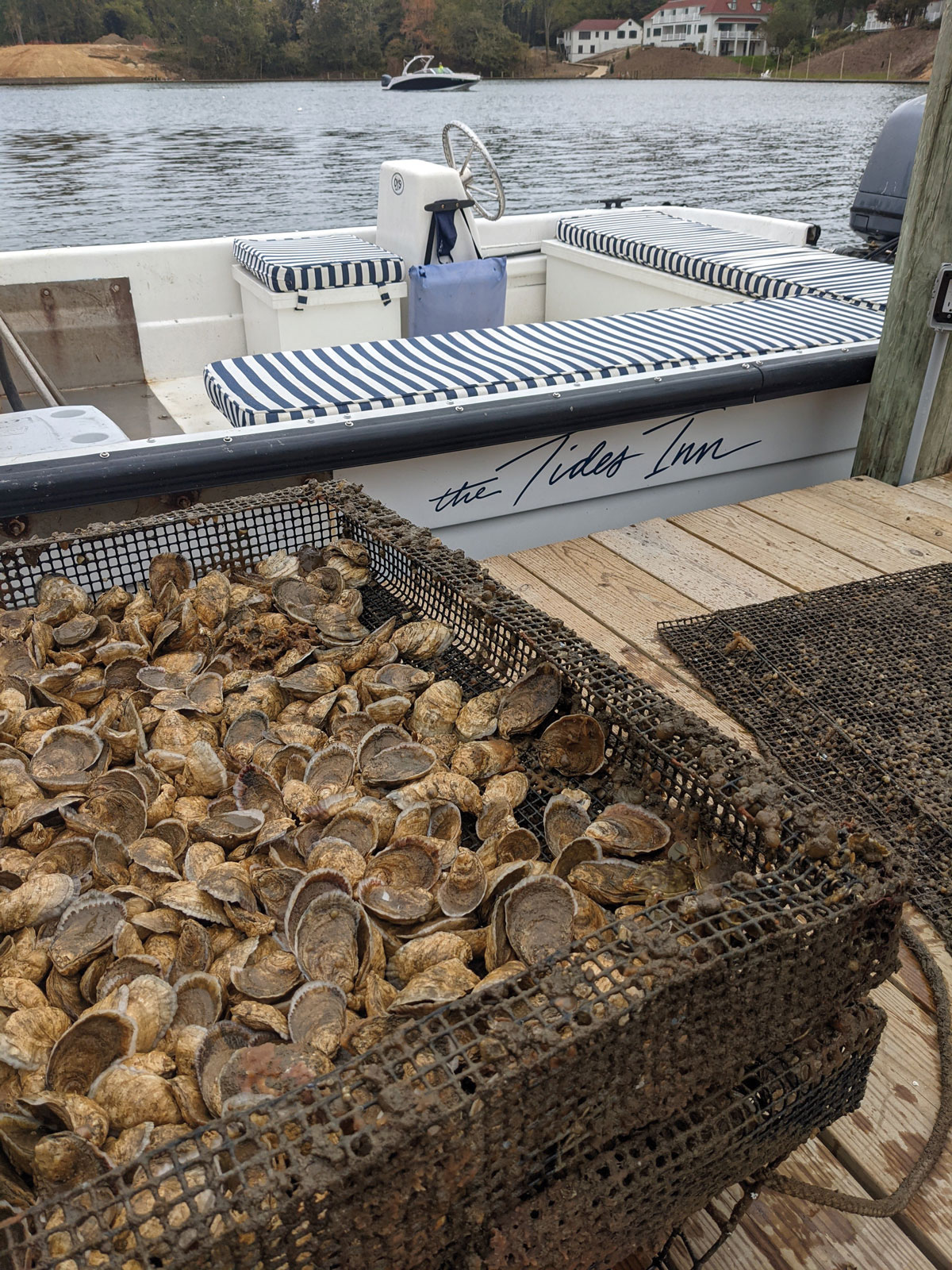
In Lancaster County, Virginia, The Tides Inn is playing an instrumental role in restoring and sustaining the oyster population. The inn offers hands-on educational trips relating to oysters to its guests.
The Tesla I rented for the weekend needed charging, so we walked when we left the inn’s grounds. We also could have jumped on the free-use bikes provided by the inn; it’s that kind of place. At first glance, Irvington seems to have little going on, but walking around allowed us to meet some locals who were eager to share the highlights of their little town. Irvington is artsy, but it is a mellow kind of artsy – high end, but not looking down their noses at strangers just browsing. Irvington is a hub for the Northern Neck Artisan Trail sponsored by the Artisans Center of Virginia. At last count, this section of the trail was populated by 17 painters and craftspeople and is home to eight venues or art centers and incorporates 24 restaurants, agri-artisans and specialty farms. We met many members of this last group at the Irvington Farmers Market.
The open-air market takes place on the first Saturday of the month from May through November. There is a reason this event is frequently named Best Farmers Market on Virginia’s East Coast by Virginia Living Magazine. For me, that reason is the food. There are plenty of crafts, art and fresh produce, but I am always looking to engage in some new tastes – like pig lotion and oink juice. Those are the rub and sauce on Mooch’s BBQ. These dedicated folks make the 5+ hour drive from Charlotte, North Carolina, to set up at the farmers market and deliver some great eats! My favorite was the Mac & Mooch Bowl, which I enjoyed while local musicians played in the gazebo.
Lancaster County is a ripe spot along the Virginia Oyster Trail. Virginia is for oyster lovers and this area is packed with likeminded bivalve enthusiasts every November for the Urbanna Oyster Festival. Throughout the year, the best place to get oysters in Irvington is Byrd’s Seafood Co., a food truck and catering enterprise. If fresh, fried oysters are not on the menu, a soft crab taco will suffice. Part of the trail’s Middle Bay Western Shore region, Lancaster County embraces aspects of eco-tourism and most restaurants source their seafood locally.
For more information: virginia.org.
Lan-gəs-TER, New York
In western New York, Lancaster, which is essentially a suburb of Buffalo, is both a town and a village within a town. My first stop in the Village was at Lancaster Coffee Co. & Café, where I was hoping to snag some merch and confuse all my friends back home at the similarly named Coffee Co. Lancaster. Turns out they did not have any shirts in my size.
After a hot chai latte (because there was two feet of snow on the ground during my visit), I joined up with a tour guide from Explore Buffalo who led me and my family on a two-hour historic walking tour of the village. Equipped with a wealth of knowledge about local architecture, a sense of historical importance and hometown insight, our guide met us outside the whitewashed walls of the Lancaster Historical Society. The building, once home to a prominent doctor and the first building to have electricity in the area, was relocated to a quiet side street to save it from progress. Throughout the years, the people of Lancaster have endeavored to save its old buildings – failing sometimes and finding success with others. Soon into her speech, our guide used a word resonating with Lancaster, Pennsylvania – renaissance.
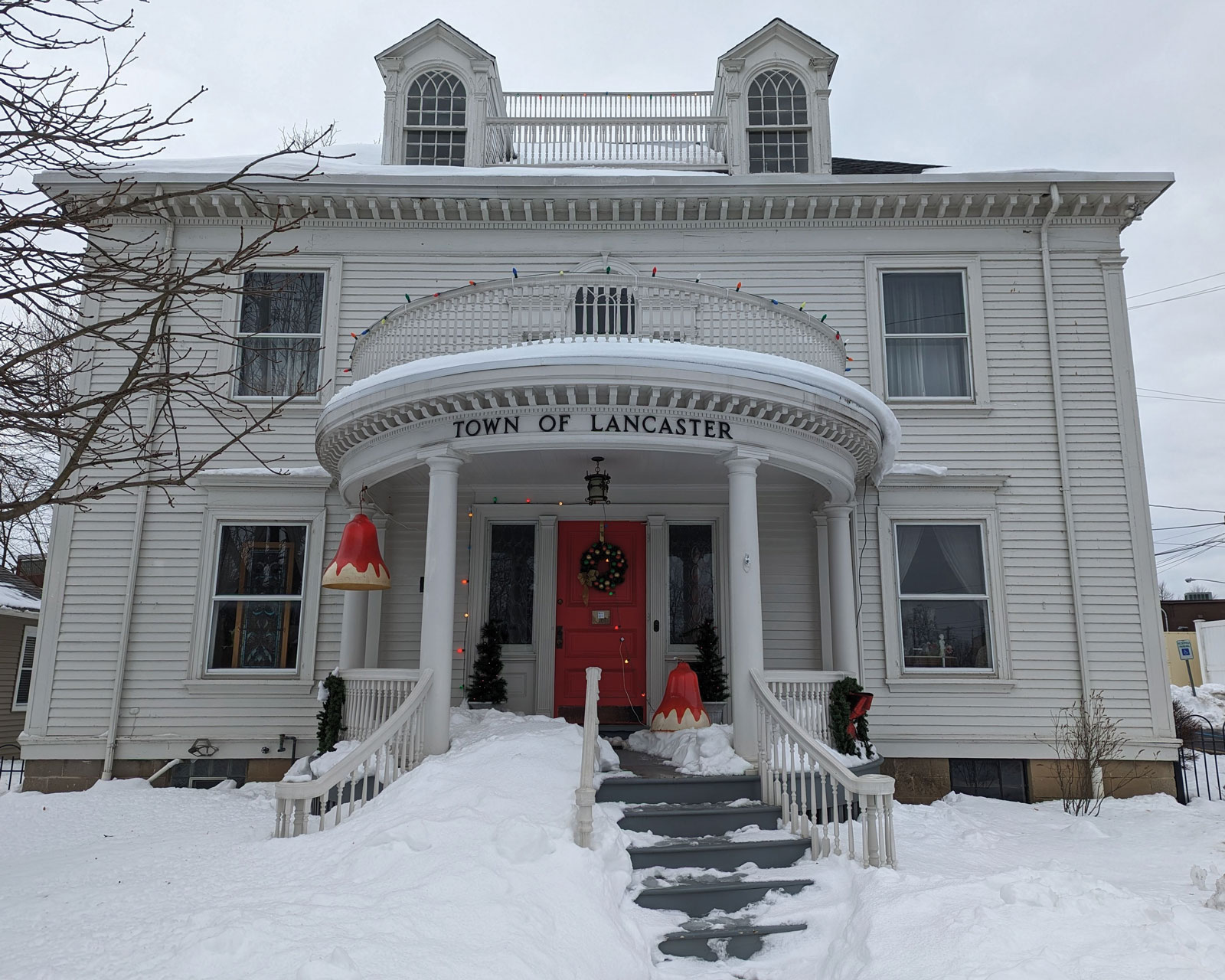
The Lancaster Historical Society makes its home in a home that was once owned by a prominent doctor and was the first in the area to have electricity. Lancaster, New York, is a suburb of Buffalo, hence the snow that greeted us.
While ours is a long-running revival, the Village of Lancaster’s rebirth is just beginning. Drawing on a $1 million grant from the state, Lancaster has revitalized a strip of downtown along Central Avenue and literally put the road back on Main Street. Central Avenue is now a mix of a quaint downtown and bustling city center with boutiques, the coffee shop I first stopped at and apartments above professional offices. Up until a few years ago, Main Street was only half here. Developers in the 1970s drew on the idea of urban renewal by literally chopping the sloping Main Street in half and constructing a massive department store in the breach. The dead-end Main Street never really worked, and the entire area suffered. The department store eventually closed.
Using the recently acquired state funding, the Village has rebuilt Main Street, reverting the slope into a town roundabout now used for celebrations like a New Year’s Eve ball drop. New attractions dot Main Street, including a meadery, the Greater Lancaster Museum of Firefighting (which includes engines from Bowmansville, New York) and the craft chocolatier, Dark Forest.
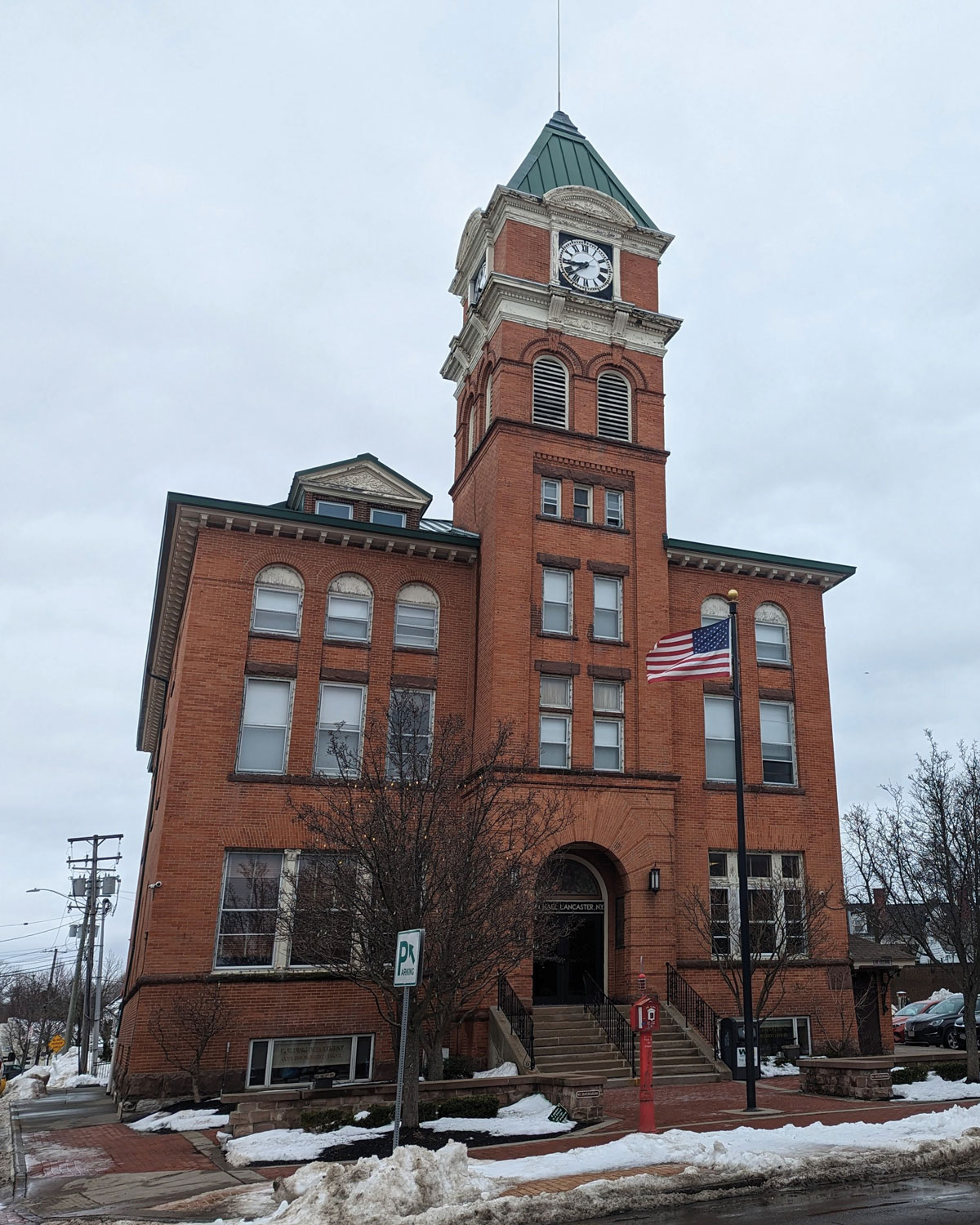
The Lancaster Opera House, which dates to 1897, was used as a factory for assembling parachutes during World War II. Today it is a community center whose stage is used by a wide range of organizations including theater and music groups.
With its meandering history, it is hard to place a “center of town” in the Village of Lancaster, but the most recognizable structure is by far the Lancaster Opera House. Built in 1897, the four-story, clock tower-adorned structure, which was used to assemble parachutes for the war effort during WWII, now doubles as a town hall. The Opera House stage is currently used by everyone from tribute bands to local productions of iconic plays and musicals.
For more information: explorebuffalo.org.
From revitalization efforts in New York, to covered bridges in Ohio and agri-artisan endeavors in Virginia, I found many similarities to “our” Lancaster – no matter how the place names were pronounced. And I have to say, every Lancaster I visited is welcoming and friendly. There are Lancasters in 24 different states stretching from New Hampshire to California. The one in Arkansas is listed as a ghost town! I’m intrigued enough to head out on another road trip.





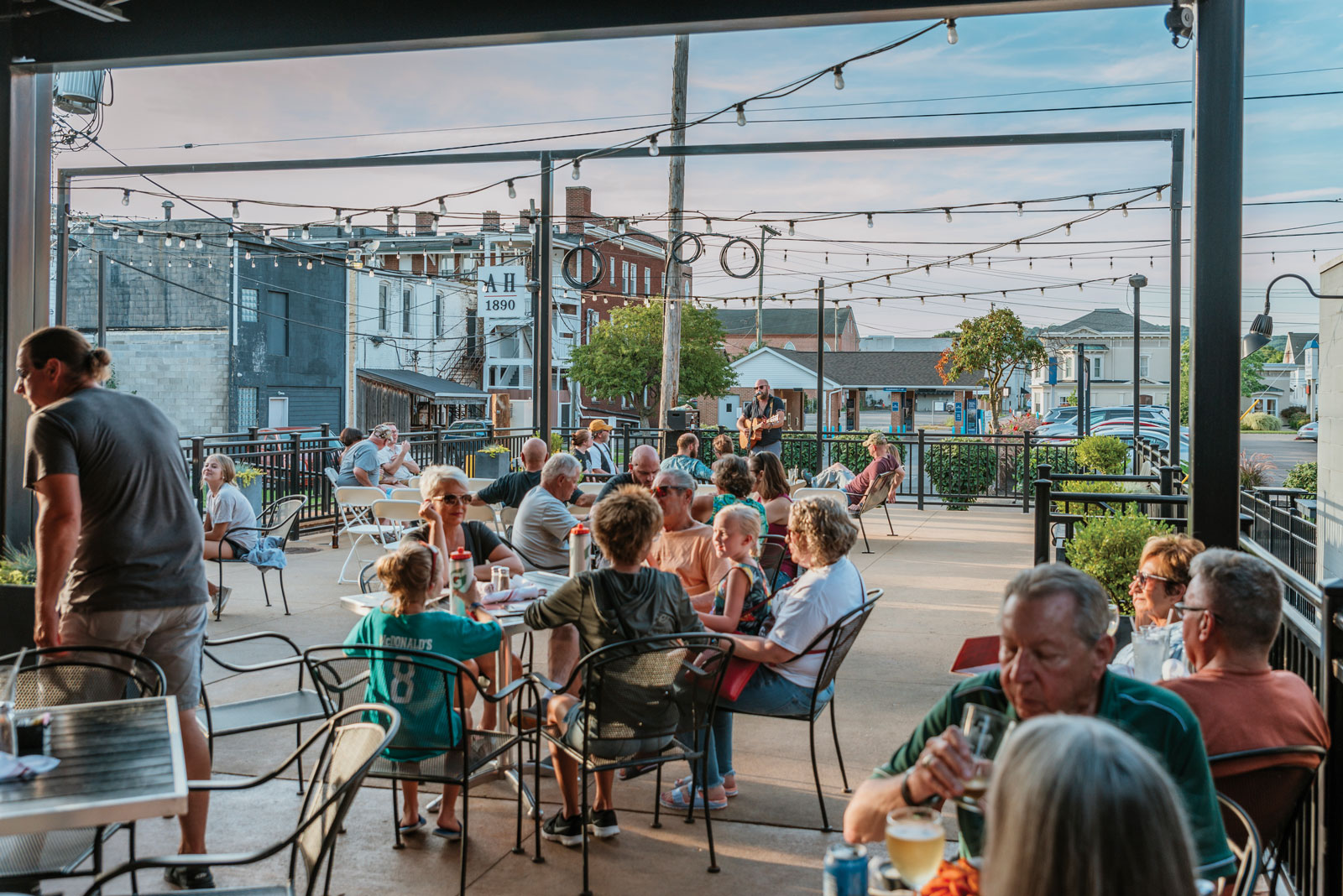
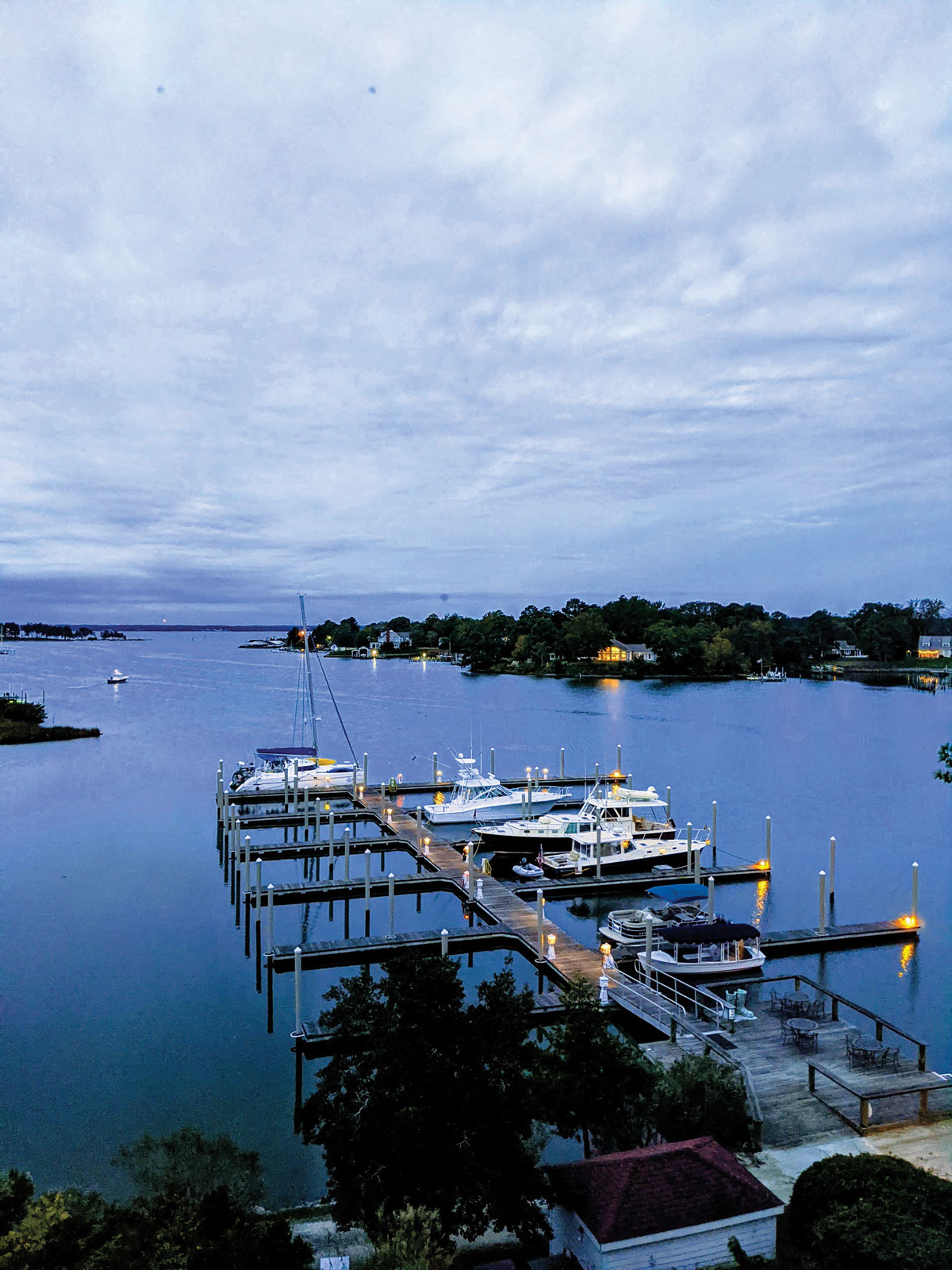
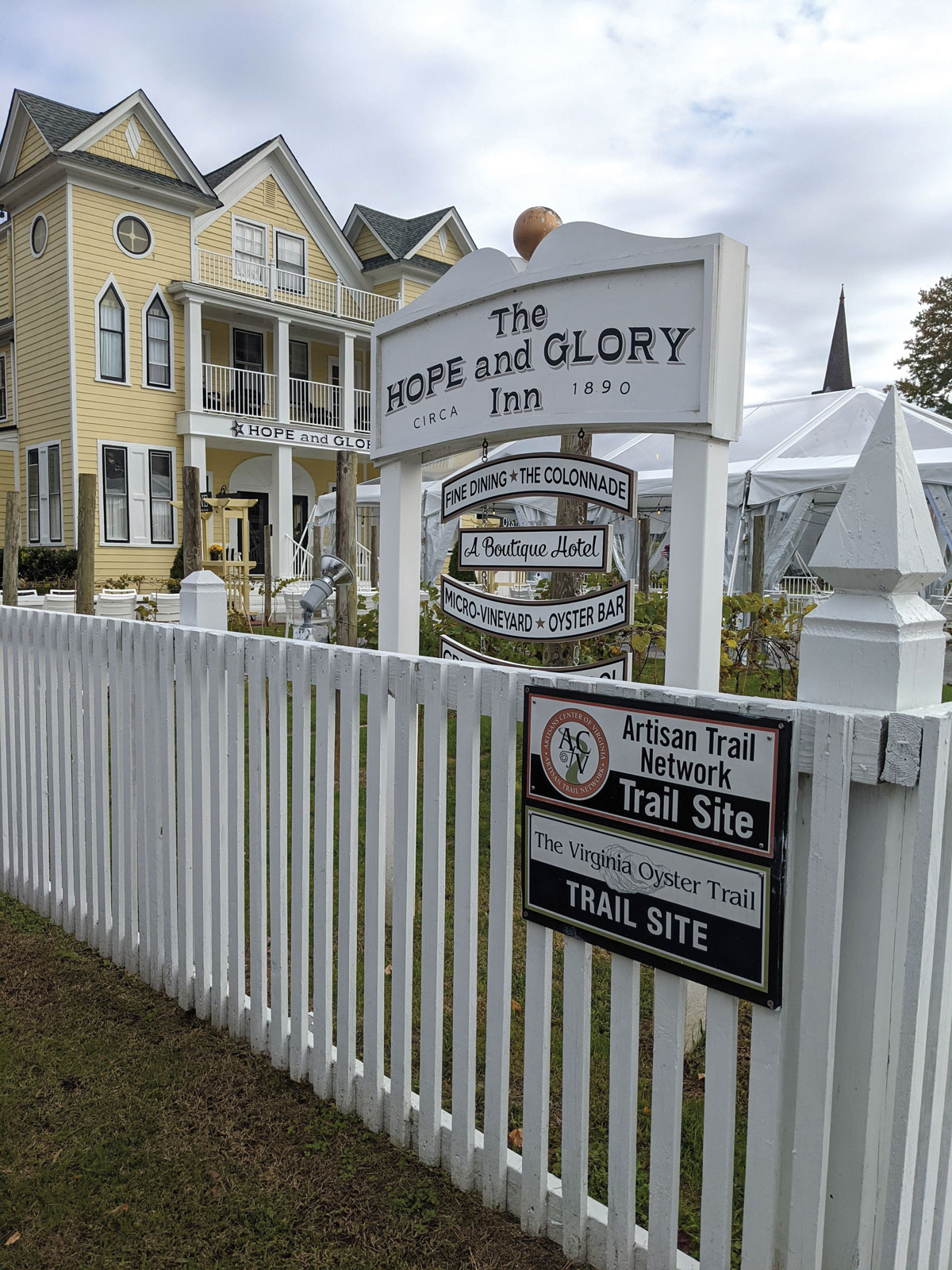
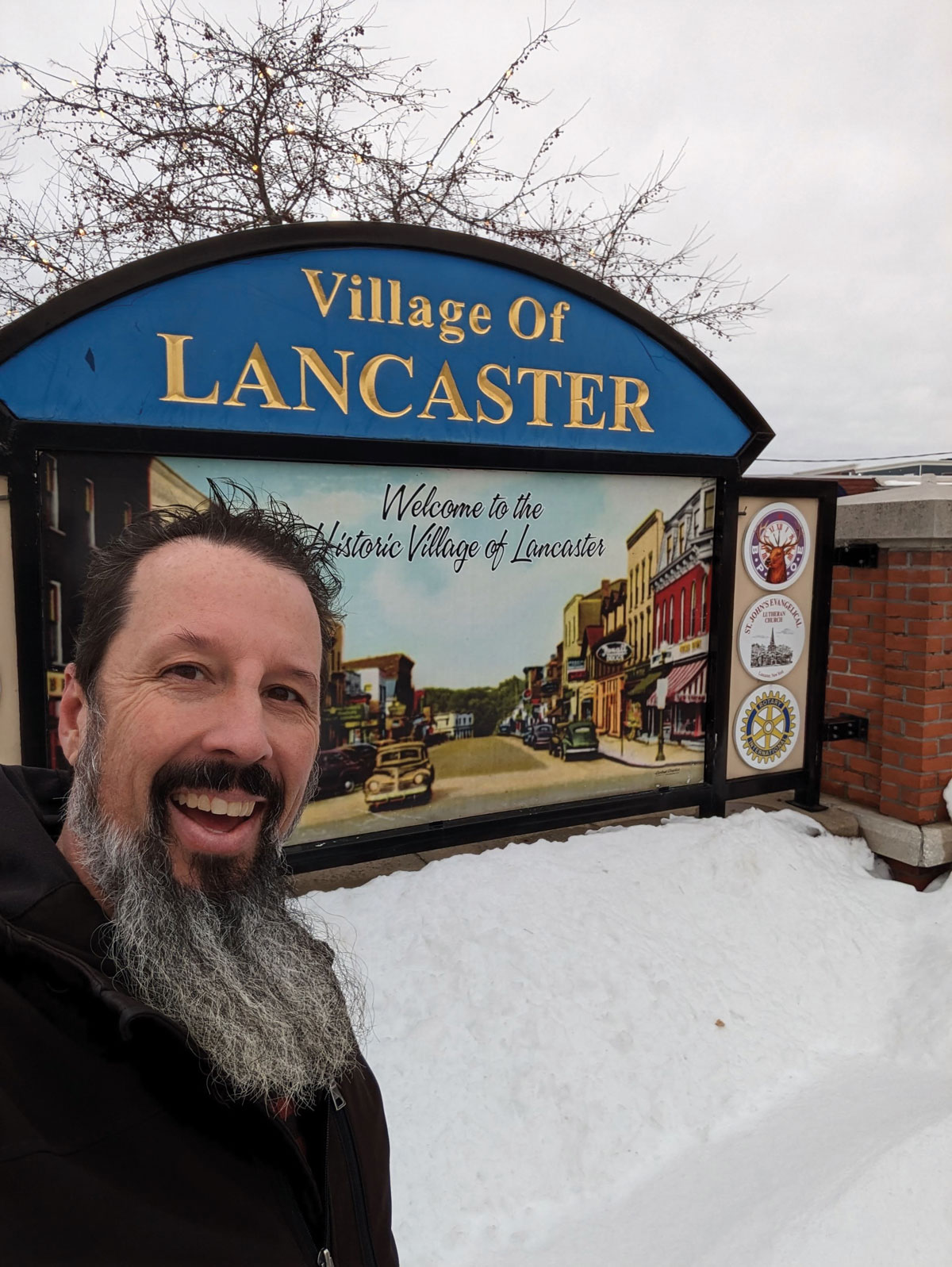
I live on Cabbage Hill in Lancaster Pennsylvania.
My family has owned our home since 1978